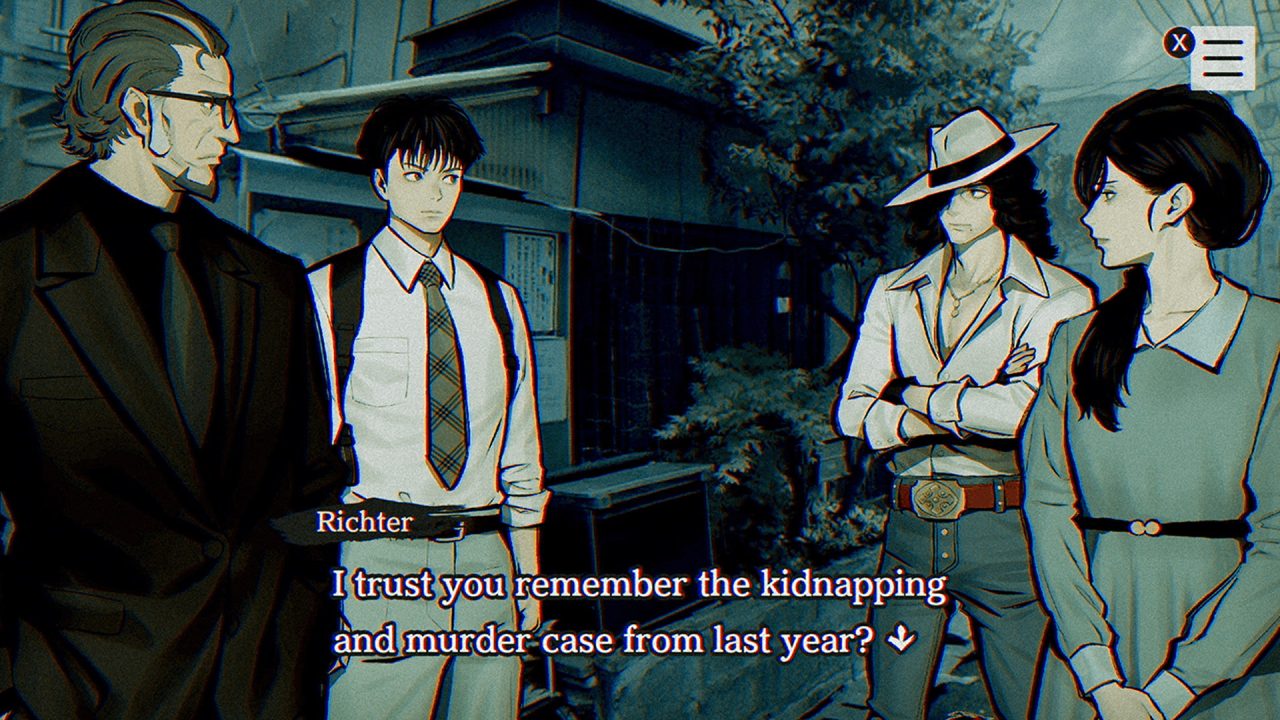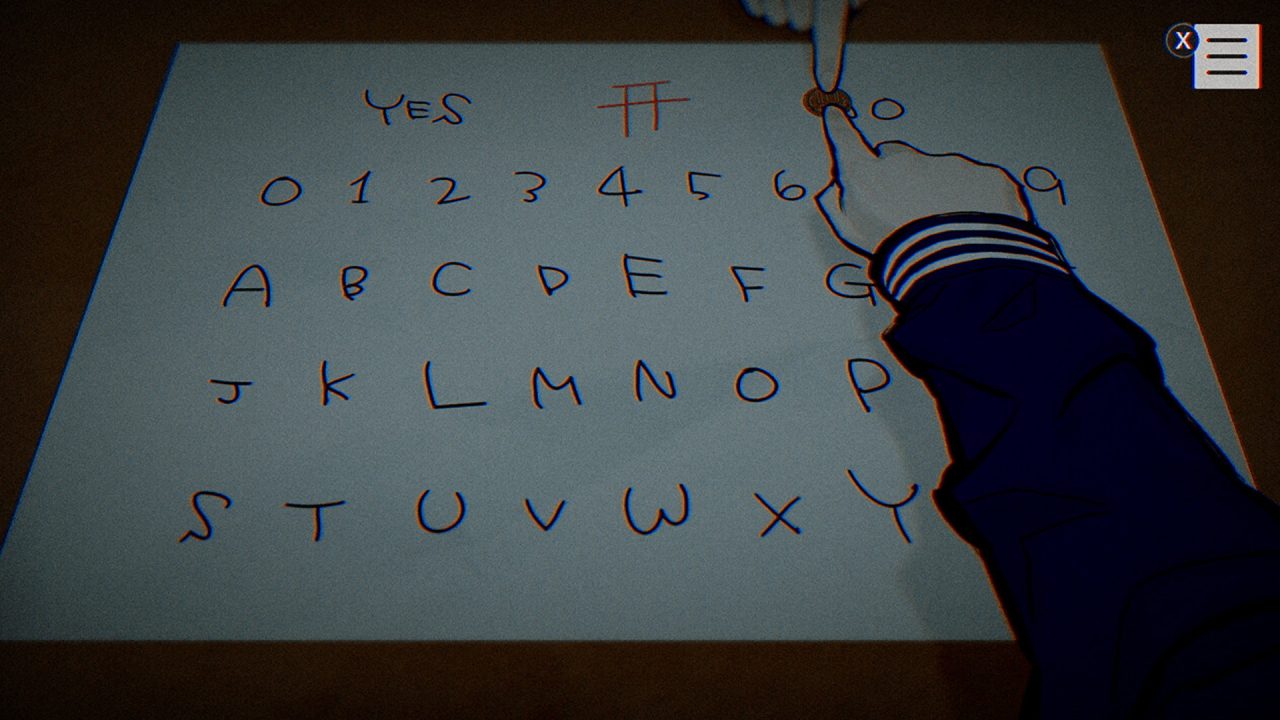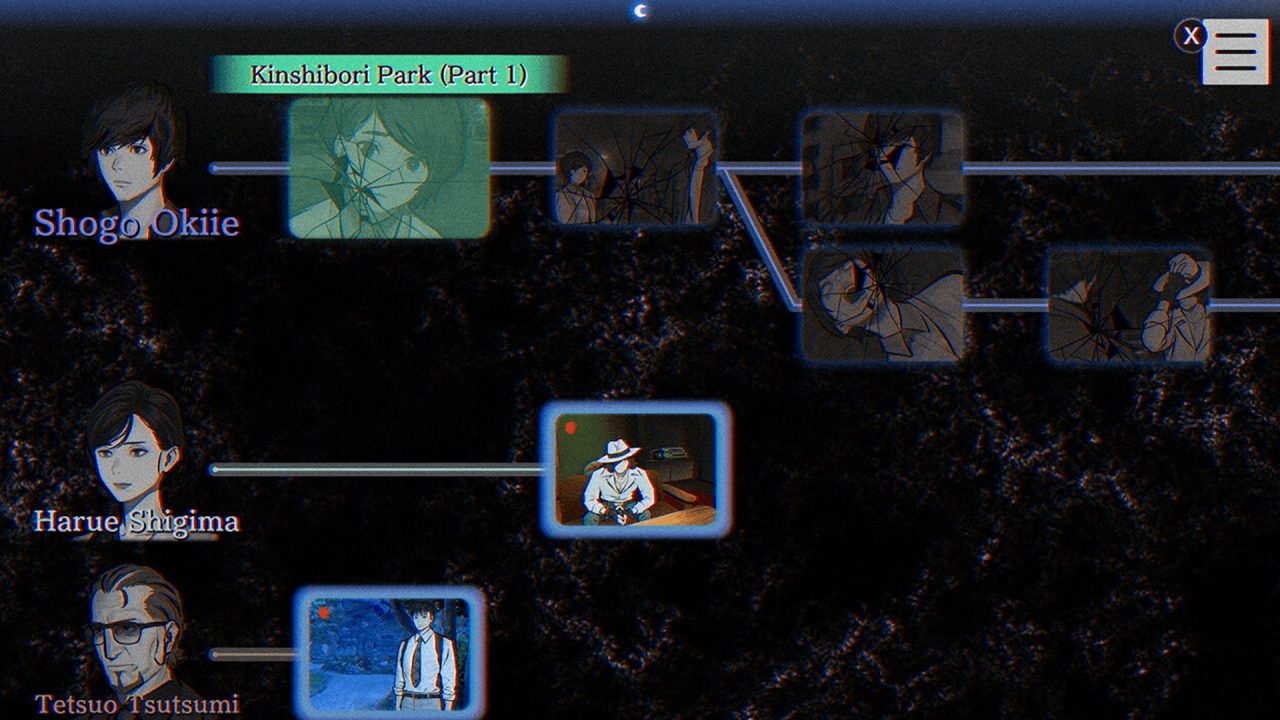So, how many people would you kill to bring a person back from the dead? Is that a startling question to get hit with suddenly? It’s hard to imagine — even if the opportunity did fall in my lap — that I would even consider the idea. Nevertheless, that’s the central question of visual novel Paranormasight: The Seven Mysteries of Honjo, which follows several characters to whom that possibility falls.
It’s sometime in the ‘80s, a harder time, when people still relied on phone booths to make calls. The Seven Mysteries of Honjo are a series of paranormal urban legends, which the game is appropriately focused around. There are rumors that seeking these phenomena could lead to the Rite of Resurrection, which as it sounds, would allow a person to raise someone from the dead. What could go wrong there? Corresponding to the mysteries is a set of netsuke, called curse stones, that could possibly give one the tools to perform the Rite. It gets messier because the stones must be filled with soul dregs, the leftover residue of formerly alive people, to become fully functional. The curse stones, much like the notebook from Death Note, become a secretive weapon that anyone wandering about Honjo, Sumida City, Japan on this fateful night could possess, turning every interaction with another person into a potential landmine.
Like many visual novels, Paranormasight offers branching paths and multiple characters to navigate as their personal timelines intersect with and diverge from the others. With this setup and such a volatile weapon in your pocket, you might think this situation could lend itself to freedom, experimentation, and exploration in the story. Disappointingly, the narrative is generally straightforward. It shouldn’t come as a spoiler that you eventually do put a curse stone to use, but essentially, you’re on a single track, albeit one that occasionally takes some sharp turns. Though you are told that you possess the power to send someone on their not-so-merry way into curse land, the instances when you actually have the choice of whether to do so are rare. A sense of agency dangles before you, but any significant, required player input is light.

As a horror experience, Paranormasight has a few jump scares where the music blasts as the camera zooms to an extreme close-up of a creepy image. However, the real horror is putting a curse stone in your hands. You, the monster, stalk the night, having awkward, creepy conversations with people you bump into on the streets at 2 a.m. The greatest horrors occur offscreen, as characters recall grisly events from the past that aren’t depicted. If you want that fun feeling of getting creeped out by a horror story, it feels as though you’re missing out on the best stuff.
The story, unfortunately, doesn’t have much more to offer than this. It turns toward a suspenseful drama with supernatural frosting. There are some nice tense conversation scenes where you may know something the characters don’t and you’re left waiting to see what will happen when the incendiary information comes to the surface. In terms of venturing any interesting exploration into Paranormasight’s core question, however, the story falls well short of offering any philosophical ponderings and leans more toward inter-character drama. I think it’s difficult to fathom any situation in which such a deal would feel morally acceptable. I could sympathize with the characters who chose to pursue that possibility, but never enough to make it seem reasonable.
It’s not a total loss, however, as Paranormasight’s characters are generally likable or have wrinkles that make for decent drama fodder. Most of the characters have a humorous side, with the standouts being a pair of old/young buddy cops who are as invested in constantly razzing each other as they are in preventing a potential crisis. Another favorite of mine was a flashy private investigator with the vibes of a leftover Jojo’s Bizarre Adventure character. I’m not sure how you can interpret two characters on a date exuberantly expressing to each other how much they enjoy dabbling in the occult if not as a comedy. If you need a break from the suspense, you can check your surroundings for “Mocking Birds,” which are stickers that feature normal birds in subversive clothing or hairdos. Even better is that the characters openly and correctly remark on how awesome Pompadour Penguin is.

As entertaining as the dialogue is, none of the characters ever break out of their one-track motivations. Even though most are sympathetic despite their willingness to murder one another to bring back their loved ones, none get enough screen time to develop much complexity. Oddly, the humor is the area where Paranormasight is most successful. Of course, that’s not a bad thing, as unsettling stories need some comedy as a balance. But the story’s most climactic revelation is so absurd and silly (with the characters agreeing) that it almost feels like the narrative is intended to be a total farce. The problem is the “almost.” The dark subject matter clashes so heavily with some of the comedic story beats that it comes out as more cutesy than anything, and it’s difficult to determine if that’s the reaction the developers wanted. As a horror and drama, Paranormasight fails to drum up enough of either to make any real splash. The best moments are the fourth-wall-breaking ones, which eventually reach a clever payoff. Unfortunately, there aren’t enough of these.
The backgrounds and locations you visit in Paranormasight are derived from photos of the real city of Honjo, and it’s cool to get an accurate representation of some of the sites there. On the other hand, some areas, like the city streets, aren’t too distinctive and could have come from anywhere. A horror story might not be how the city would want to promote itself to potential visitors. However, as the narrative in part explores the area’s storied history dating back to the Edo period, it may as well take place there. While your character is always stationary, it’s nice that you can explore a full 360-degree panoramic view of some of the sites.
Paranormasight’s character appearances are evocative, and they’re drawn in an attractive classic manga style. They look like mostly ordinary people, but many have a creepy, off-putting quality to them, even if I couldn’t point to why exactly. Maybe it was their shifty eyes. Jump scare scenes aside, the music is enjoyable, with some folksy tunes that you’d associate with Japanese media from that era, along with the typical foreboding background music you’d expect in a Japanese horror game. The standout track, however, is the buddy cops’ brash, horn-led theme song, to which I would sometimes set the controller down and listen because it got my blood pumping.

Paranormasight: The Seven Mysteries of Honjo offers some fun in drawing up a horror story from Japanese superstitions. Unfortunately, it leans too heavily on the comedy, even though the jokes are appreciated. When the game dangles the possibility or even the appearance of some agency for the player, it would have been more exciting to make the player feel as though they’re really making choices or feel invested in the horror elements. If there’s anything to take away from this experience, it’s that murder is typically wrong, but a chicken dressed as a greaser is way cool.


